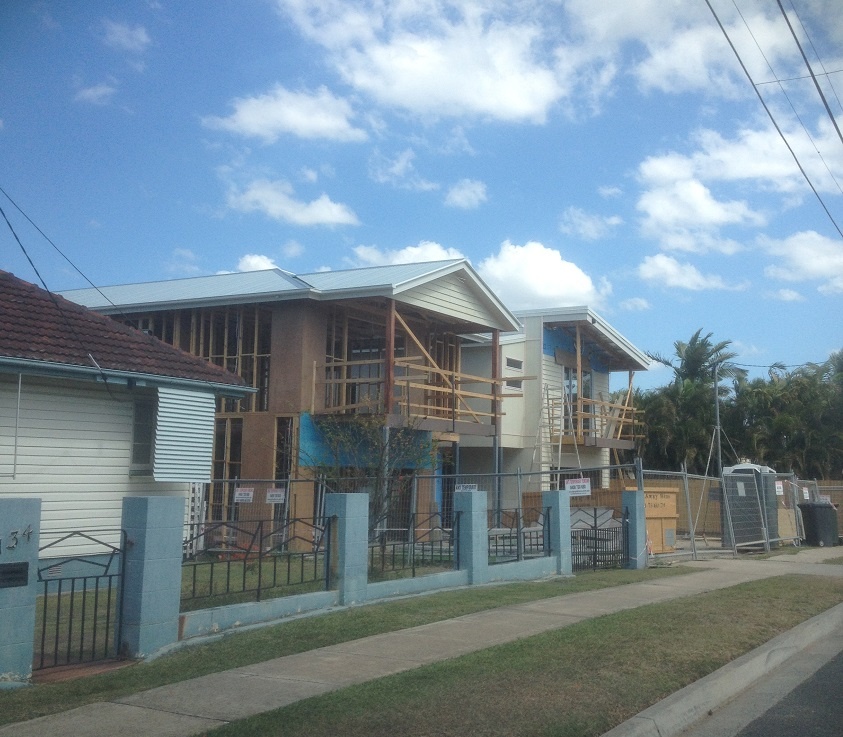Visible & invisible residential & commercial construction
FC-01x Future Cities (1st Run) - Task 1

Uploaded on 2014-10-19 by Erics54
![Residential][1] In this photo we see a timber framed, metal roofed and Fibre cement clad house Constructed in Brisbane Australia. Materials such as these can be both sources locally and globally. For example - The Radiata frame is often timber sourced from New Zealand, the Roof Sheeting can come from China or India and the glass may be manufactured in North America The late 1950's house in the foreground was built entirely from local hardwoods, and locally manufactured brickwork and roof tiles utilizing local clays, but the 'polished plate' glass for the windows probably came form interstate or overseas. ![Commercial Construction][2] In this photo we see a completed portion of a 'Westfield' shopping centre in the Northern suburbs of Brisbane Australia. Again significant components may be manufactured locally, they may also be overseas sourced. The timber screen surrounding the lift and fire escape stair is constructed from Oregon from North America and Meranti which may have been sourced from Malaysia, Indonesia, the Philippines and Thailand. The bitumen carpark and roadway is constructed using imported oil. The entry toll gate equipment may include equipment fabricated from a range of imported electronic controllers sourced from Europe or Asia. Many global corporations have a presence in Australia allowing access for their products sourced from their parent company. An examples may be paint pigments that may be sourced from North America (Dulux). Westfield itself is an international corporation with representation in North America, United Kingdom and Australia (at least). Which brings me to the invisible. Part of the global construction process is the mobilization of money. In this case financing of this project would have entailed a complex web of interrelated companies and entities to source and finance the project. Although slightly tangential here part of the concerns of 'economic' sustainability here in Australia also involves the manipulation offshores capital flow arrangements that allow tax minimisation and reduces the community benefit of these large projects. Another Invisible part of the construction resource process includes skilled migration arrangements. This can be seen as both distributive in a global sense and socially disruptive at a local level with both local salaries reducing and remittance payments being removed for the local economy but improving offshore economies. I also point out the construction crane, only slightly 'visible' to those not usually involved with the industry. Construction equipment is also part of this process. This crane was possibly manufactured in either Asia (Favco - Malaysia) or France, Germany, Italy and Portugal (Manitowoc). Interestingly the components for a 'Favco' crane can be sourced from China, Japan, US and Germany! [1]: https://edxuploads.s3.amazonaws.com/14136967618605194.jpg [2]: https://edxuploads.s3.amazonaws.com/1413696840271106.jpg